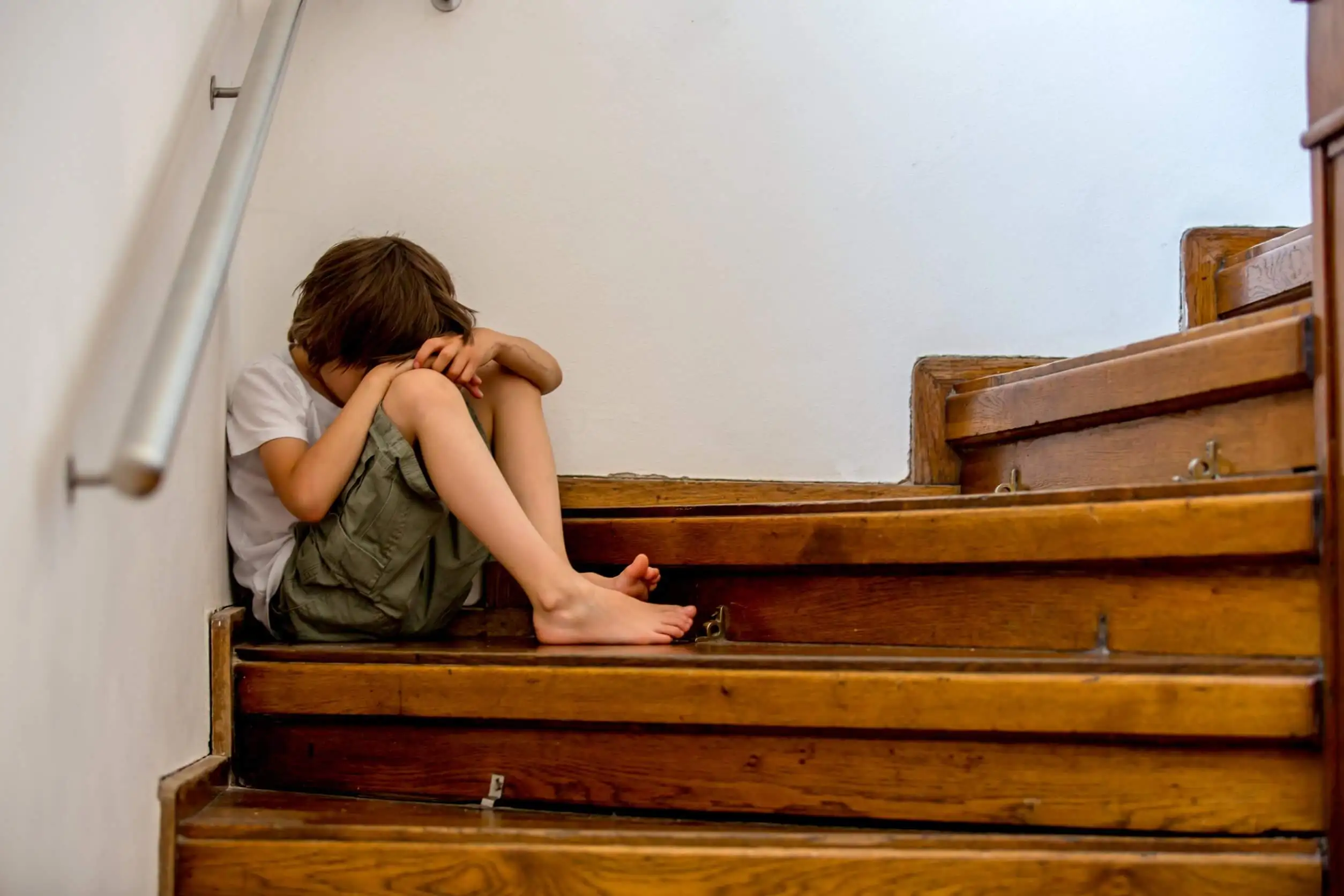Cleithrophobia or the Fear of Being Trapped: Causes and Treatment


Written and verified by the psychologist Maria Fatima Seppi Vinuales
Cleithrophobia is the term used to refer to the fear of being trapped. It can be triggered by being locked in common spaces such as the bathroom, elevator, or small rooms.
It should be noted that fears and phobias are not the same. While fear is adaptive and predisposes to action, phobia paralyzes. It’s a form of anxiety in which the fear is intense, persistent, and irrational.
In this particular case, it can trigger episodes of panic in situations in which the person feels imprisoned and that they’re being trapped. The condition affects both children and adults and can coexist with claustrophobia, with which it is often confused. What are its main symptoms? How is it treated? Here are the details.
Symptoms of cleithrophobia, or the fear of being trapped
Like most phobias, cleithrophobia causes the activation of the sympathetic nervous system in response to what is perceived as a danger signal or stimulus. Some of the most common symptoms are as follows:
- Increased heart rate
- Difficulty breathing or hyperventilation
- Sweating
- Dizziness
- Nausea
- Shaking hands
- Immobility
- Panic attacks, with the increasing feeling of fear of death when locked in a small space.
The drawback with the symptoms is that the person not only begins to fear the phobic object or situation itself, but also begins to fear the symptoms, thereby increasing his or her anxiety. This reinforces the avoidance of the situation and the person begins to isolate him/herself.
You may be interested in: 8 Ways to Deal with Fear When Starting a New Project
Is it the same as claustrophobia?
No, they aren’t the same, although one can accompany the other. This happens because having a phobia of one type increases the likelihood of having a similar one. For example, if I have a fear of cats, I might develop a phobia of dogs.
The same happens with cleithrophobia and claustrophobia. Claustrophobia is the fear of confinement, of an enclosed space, while cleithrophobia involves the fear of being trapped, being locked in, nnd of not being able to get out or escape.
Their difference is subtle. For example, if we’re in an elevator, it would be a case of cleithrophobia if there’s a fear of being locked in. It’s also claustrophobia if there’s a fear of getting into the elevator because it’s an enclosed space.
Another example of cleithrophobia could also be the fear of being trapped and not being able to escape when we’re held in a harness in an amusement park, even if it’s an open space.
What causes it?

Regarding the development and evolution of cleithrophobia, one of its origins can be sought in the person’s direct experiences. For example, having been locked for a long time in an elevator.
It should be clarified that this fact per se doesn’t necessarily imply that a phobia will develop, but the frequency and severity of it does. On the other hand, if there was no exposure, presence or contact with the feared situation after this, this increases the possibility of it becoming an aversive stimulus.
Other possible explanations have to do with vicarious learning, i.e., having seen a person in a similar situation (modeling), and also by the transmission of negative information regarding certain situations. For example, if parents constantly told us to be careful because we could get locked in an elevator. However, these three forms can interact and reinforce each other.
A high level of stress is also a factor. It can accentuate both the direct experience and the impact of the information received and the situation observed. The same goes for biased thinking, which places greater emphasis on danger signals.
You may be interested in: The Philosophy of Fear
How can cleithrophobia be treated?

For the treatment of phobias, techniques using cognitive behavioral therapy are often very useful. Psychoeducation is one of the most relevant, as it allows you to provide information to the patient about phobias, the way they occur, and how they influence thoughts and behavior.
Another technique has to do with the gradual exposure to the phobic or aversive stimulus, i.e., to the one that is avoided. This involves step-by-step planning of the different situations the person will be exposed to. This is chosen on the basis of an elaboration of a hierarchy of fears.
Likewise, work is carried out on the imagining of a situation, or also on the visioning of a similar situation, in order to then confront the person with the situation they fear. In some cases, the use of virtual reality as a tool is already employed.
As we’ve already mentioned, in many cases the anxiety created by a phobia increases because patients start to fear its symptoms. Because of this, work is also carried out on interoceptive exposure.
This consists of the person actually experiencing these feared and unpleasant sensations so that he/she can identify them when they occur, learn to control them, and eventually lose their fear of them. This control is achieved by teaching relaxation techniques at the same time.
Sometimes work is done on cognitive restructuring, through which the person learns to question their thoughts. In many cases, Ellis’ ABC model is offered to the patient.
This model seeks to explain how, when faced with an event or stimulus (A), our belief system is activated (B), which leads us to carry out certain behavior. The intention is that the patient can learn to question these biased or irrational beliefs and suggest new ones.
It’s important to deal with this phobia
Some phobias are really limiting, as they’re part of our daily life. Not dealing with them leads to an enormous deterioration in one’s performance and relationships.
Cleithrophobia is one of them, as any place or object that prevents them from escaping or makes it difficult for them to leave could be interpreted as a potential danger. Because of this, it’s necessary to give it the attention it deserves and to seek the necessary help to face it.
All cited sources were thoroughly reviewed by our team to ensure their quality, reliability, currency, and validity. The bibliography of this article was considered reliable and of academic or scientific accuracy.
- Bados, A. (2009). Fobias específicas. Departament de personalitat, Avaluacio y Tractament Psicologics: Universidad de Barcelona.
- Bados, A., y García, E. (2011). Técnicas de Exposición. Departamento de Personalidad,
Evaluación y Tratamiento Psicológicos Facultad de Psicología, Universidad de
Barcelona. - Otto, M.W., Smits, J.A., Reese, H.E. (2004). Cognitive-behavioral therapy for the treatment of
anxiety disorders. Journal of Clinical Psychiatry; 65(Suppl 5):34–41. -
Samra CK, Abdijadid S. Specific Phobia. [Updated 2022 May 8]. In: StatPearls [Internet]. Treasure Island (FL): StatPearls Publishing; 2022 Jan-. Available from: https://www.ncbi.nlm.nih.gov/books/NBK499923/
This text is provided for informational purposes only and does not replace consultation with a professional. If in doubt, consult your specialist.








